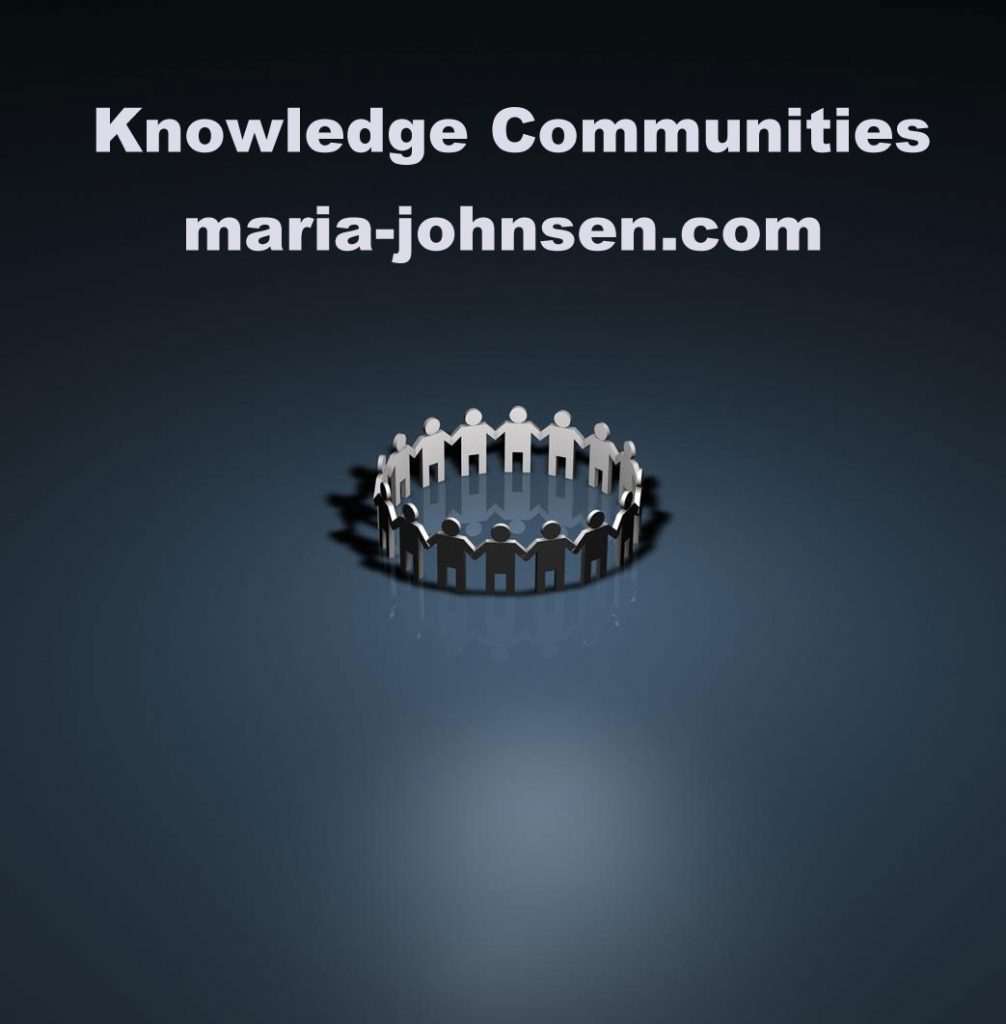Knowledge Communities
- Home
- Knowledge Communities
Knowledge Communities
This paper presents an examination of Knowledge Communities (KC) with a focus on their theoretical underpinnings, practical applications, strategies for integration, and the tools and processes associated with Knowledge Management. Knowledge Communities, often referred to as KC, are defined as groups of individuals who share common challenges, interests, or a profound passion for a specific subject. They collaborate to deepen their understanding of this subject through continuous learning and the sharing of knowledge (AIA Knowledge Communities). This paper explores the theoretical foundations, strategies, tools, and processes that facilitate the integration of Knowledge Management into organizational practices, with a particular emphasis on KC.
 The theoretical aspect of KC revolves around the management of both technology and human interactions to effectively share knowledge. Successful knowledge sharing relies on the interaction between knowledge seekers and knowledge sources. Knowledge seekers require specific information to perform tasks with confidence, while knowledge sources possess the necessary information. The theoretical aspect is structured to facilitate effective knowledge sharing, enabling both seekers and sources to understand their respective needs and resources.
The theoretical aspect of KC revolves around the management of both technology and human interactions to effectively share knowledge. Successful knowledge sharing relies on the interaction between knowledge seekers and knowledge sources. Knowledge seekers require specific information to perform tasks with confidence, while knowledge sources possess the necessary information. The theoretical aspect is structured to facilitate effective knowledge sharing, enabling both seekers and sources to understand their respective needs and resources.
The concept of KC draws inspiration from the notion of “Communities of Practice” (CoP), originally coined in 1998 by Jean Lave and Etienne Wenger. They argued that CoPs are ubiquitous and that individuals are typically engaged in multiple CoPs in various aspects of their lives (Smith, 2003). Over time, the concept of knowledge communities evolved from CoPs, differing in that member participation in KC is more open-ended and may encompass all employees within a large organization (Yamazaki, 2004). This shift was notably demonstrated by Xerox’s Transition Alliance initiative, which leveraged the power of kc to improve individual motivation and job performance (Storck and Hill, 2000).
Strategies for implementing KC emphasize the significance of diverse social interactions, including one-on-one discussions, the utilization of information and communication technology (ICT) tools, group discussions, research projects, and presentations. Storck and Hill (2000) identified six guiding principles critical to the success of organizational learning within the context of KC. These principles include designing interaction formats that encourage openness and serendipity, building upon a common organizational culture, demonstrating mutual interests, leveraging aspects of the organizational culture that value collective learning, embedding knowledge-sharing practices into group work processes, and establishing an environment where knowledge sharing is defined by the community’s norms. Effective management of both technology and context is essential to provide support for learning and knowledge sharing.
Regarding tools, KC predominantly operates online, with limited face-to-face interactions. Commonly used tools include email, groupware, e-learning systems, and teleconferencing. While these tools offer significant advantages, face-to-face interactions are sometimes crucial, particularly in building trust relationships. Most knowledge communities employ predefined Knowledge Management component architectures, featuring knowledge portals, components, and databases to organize and classify knowledge effectively. The maintenance of these tools is vital to ensure timely access to categorized knowledge assets and support applications like product development and automation of business processes.
Processes in kC encompass the creation and construction of knowledge databases, storage of knowledge for learning and application, transfer of knowledge between categories, the application of knowledge, and learning for knowledge base organization. These processes are critical in structuring the knowledge base efficiently and effectively.
KC have strong ties to knowledge management, sharing the common goal of capturing, organizing, and making knowledge available to individuals within an organization. KC acts as an effective tool for knowledge management, serving to identify knowledge priorities and enhance user-friendly knowledge management tools.
One noteworthy example of KC implementation is the Hewlett Packard IT Resource Center (ITRC), which facilitates collaboration among engineers, internal IT staff, and customers. These inter-organizational communities address specific product or issue-related topics, enabling members to seek and provide assistance efficiently. To overcome trust issues, Hewlett Packard employs user profiles and ratings to assess the utility of responses (Barrett, et. al., 2004).
In conclusion, KC, grounded in the principles of collective learning and knowledge sharing, have gained widespread acceptance in the corporate world due to their simplicity and utility, especially when supported by advanced ICT tools. For the success of a KC, it is essential to have a learning context, an adequate number of knowledge-contributing members, a suitable medium, and mutual trust among participants. Knowledge communities can serve as an indispensable tool for organizations and communities, enabling them to identify knowledge priorities and enhance their knowledge management practices.
References
Knowledge communities, The American Institute of Architects,
Michael Barrett, Sam Cappleman, Gamila Shoib and Geoff Walsham.(2004) Learning in Knowledge Communities: Managing Technology and Context. European Management,Journal Vol. 22, No. 1, pp. 1–11, 2004
Smith, M. K. (2003) ‘Communities of practice’, the encyclopedia of informal education
Storck, J. and Hill, P.A. (2000) Knowledge diffusion through ‘strategic communities’.Sloan Management Review 41(2), 63–74.
Wenger, E. (1998) ‘Communities of Practice. Learning as a social system’, Systems Thinker
Concept of usability & scaling it up
Knowledge communities
Knowledge Management
Strategic Implementation of Knowledge Management
ICT in agriculture
Electronic healthcare record systems
Health Informatics
Management
Leadership Strategy
Multilevel marketing
Norwegian Welfare Systems
Is rebranding a good idea
Implications for Upgrading Accelerated Learning Practices In Educational Systems
Spirit world
